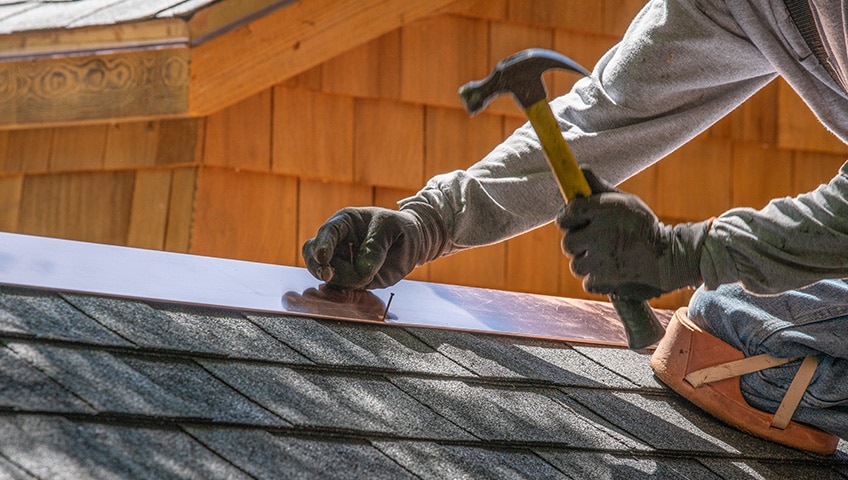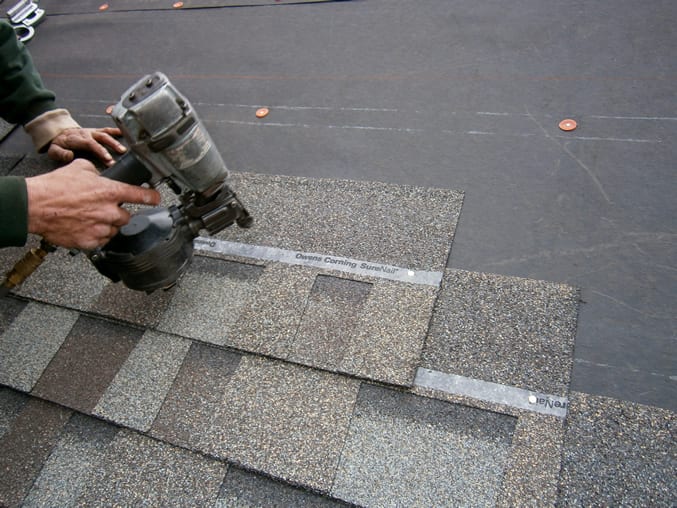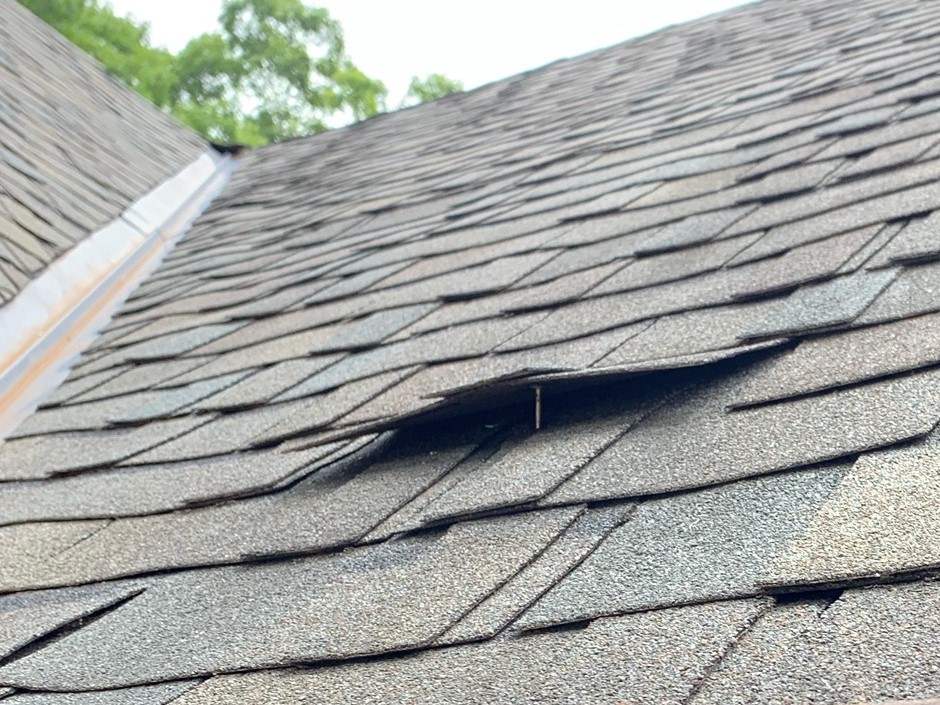From spring storms to frigid winter winds, a quality roof is one of the best ways homeowners can protect their homes from the harshest elements. Proper installation is key to keeping out moisture and creating long-term security. Nailing the shingles – literally and figuratively – on your roofing project will lead to peace of mind throughout all seasons.
Read on for an in-depth look into best practices on secure installment for every type of material so you can feel confident knowing your home is safe from whatever Mother Nature has in store.
Table of Contents
The Importance of Nailing the Roof Shingles

Nailing the roof shingles is not just a step in the installation process; it’s a crucial component in ensuring the resilience and durability of the roof. By doing it correctly, a number of significant benefits can be realized. Let’s delve into these to understand the importance of this seemingly simple action.
Enhanced Roof Stability
Nailing roof shingles properly can significantly improve the overall stability of the roof. Each shingle is vital in acting as a barrier against outside elements. Properly nailed shingles provide the necessary anchorage for each other, creating a unified, strong surface against wind and other weather conditions.
Extended Roof Lifespan
When correctly nailed, shingles adhere better to the roof, leading to a prolonged lifespan. Improperly secured shingles can loosen or fall off, leading to leaks and requiring premature replacement. However, when nailed properly, they can withstand harsh conditions, thus extending the roof’s service life.
Increased Home Value
A well-installed roof, evidenced by appropriately nailed shingles, can significantly increase the value of your home. Prospective buyers often consider the condition of the roof when purchasing a home, as roof replacement can be costly. Therefore, a roof with properly secured shingles can serve as a selling point, potentially increasing your return on investment.
Improved Aesthetic Appeal
Lastly, correctly nailed roof shingles ensure a smooth, even appearance across your roof, enhancing your home’s curb appeal. Loose or uneven shingles can detract from the overall look and feel of the home. Properly nailed shingles present a tidy, well-kept facade, adding to the aesthetic appeal of your property.
Best Practices for Nail Placement

Now that we understand the importance of nailing shingles correctly let’s explore some best practices for nail placement. These guidelines apply to all types of roofing materials, including asphalt, wood, and metal.
Use Appropriate Nails
First and foremost, choosing the right type of nail for your roofing material is important. The most commonly used nails for shingles are galvanized steel or aluminum, as they are strong and resistant to rust. Use roofing-specific nails that are long enough to penetrate through the sheathing and into the rafters or decking below.
Follow Manufacturer Recommendations
Every type of roofing material will have specific manufacturer recommendations for nail placement, including spacing and number of nails per shingle. Be sure to read and follow these guidelines for optimal installation carefully.
Nail in the Correct Location
Nails should be placed on each shingle’s flat, middle section, also known as the nailing strip. This ensures proper placement and prevents the shingles from buckling or lifting. Avoid nailing too close to the edges of the shingles, as this can cause cracking and lead to leaks.
Use the Right Amount of Pressure
When nailing shingles, it’s important to use the right amount of pressure. Too much force can cause the nail to penetrate too deep, damaging the shingle and potentially leading to leaks. On the other hand, not enough pressure may result in loose or lifted shingles. Practice using just enough force to secure the shingle in place without causing any damage.
Other Important Factors in Quality Roof Installation
Beyond nailing the shingles, other critical aspects necessitate attention to ensure an effective and quality roof installation. Overlooking these factors can result in a roof that’s at risk of developing problems down the line, such as leaks or structural damage. Let’s explore the essential factors contributing to a quality roof installation.
Proper Roofing Underlayment
The underlayment serves as a secondary barrier against weather elements, and thus, it needs to be properly installed. It should cover the entire roof deck and be laid flat without any wrinkles or folds.
Adequate Roof Ventilation
Ventilation is vital for preventing moisture buildup, which can cause rot, mold, and damage to the roof materials. Ensure there are enough roof vents installed and they are in optimal condition.
Accurate Flashing Installation
Flashing should be correctly installed around the edges, corners, and roof protrusions to prevent water from seeping into the joints and causing a leak.
Correct Shingle Overhang
The shingles should hang over the roof’s edge by an appropriate amount to allow for proper water runoff. Too little overhang can lead to water damage to the fascia and roof deck.
Quality Roofing Materials
The longevity and performance of a roof significantly depend on the quality of the materials used. Invest in high-quality shingles, underlayment, and other materials to ensure a long-lasting and secure roof.
Regular Roof Maintenance
A well-maintained roof can serve you for many years. Regular inspections and maintenance can help identify and rectify potential issues before they become major problems. Additionally, keeping the roof clean and free of debris can also help extend its lifespan. Learn more about proper roof maintenance by contacting a roofing expert.
Roof Maintenance Cheat Sheet

Speaking of roof maintenance, here’s a handy cheat sheet for keeping your roof in top condition:
- Schedule an annual roof inspection with a professional
- Clear debris, such as leaves and branches, from the roof regularly
- Keep gutters clean and free of clogs
- Trim overhanging branches to prevent damage from falling limbs
- Check for any signs of leaks or damage after severe weather events
- Replace damaged or missing shingles promptly
- Keep an eye on the condition of flashings and sealant around protrusions
By following these tips, you can help ensure your roof stays in excellent shape and continues to protect your home for years to come. Remember, proper installation and maintenance are key to a secure and long-lasting roof.
FAQ
Q: Can I use any type of nail for shingle installation?
A: It’s important to use roofing-specific nails, such as galvanized steel or aluminum, to ensure proper strength and resistance to rust.
Q: How many nails should be used per shingle?
A: The number of nails per shingle will depend on the manufacturer’s recommendations. Be sure to follow their guidelines for optimal installation.
Q: What can happen if the shingles are not nailed correctly?
A: Improperly secured shingles can lead to leaks, premature replacement, and decreased roof lifespan. It can also affect the appearance and value of your home.
Conclusion
Nailing shingles properly is a crucial step in ensuring a secure and long-lasting roof. As we have discussed, it not only affects the performance and lifespan of your roof but also significantly impacts the value and aesthetic appeal of your home.
By following best nail placement practices and other critical factors in roofing installation, you can enjoy a durable and beautiful roof that protects your home for years to come. Remember to regularly maintain your roof and promptly address any issues to extend its lifespan and provide peace of mind.